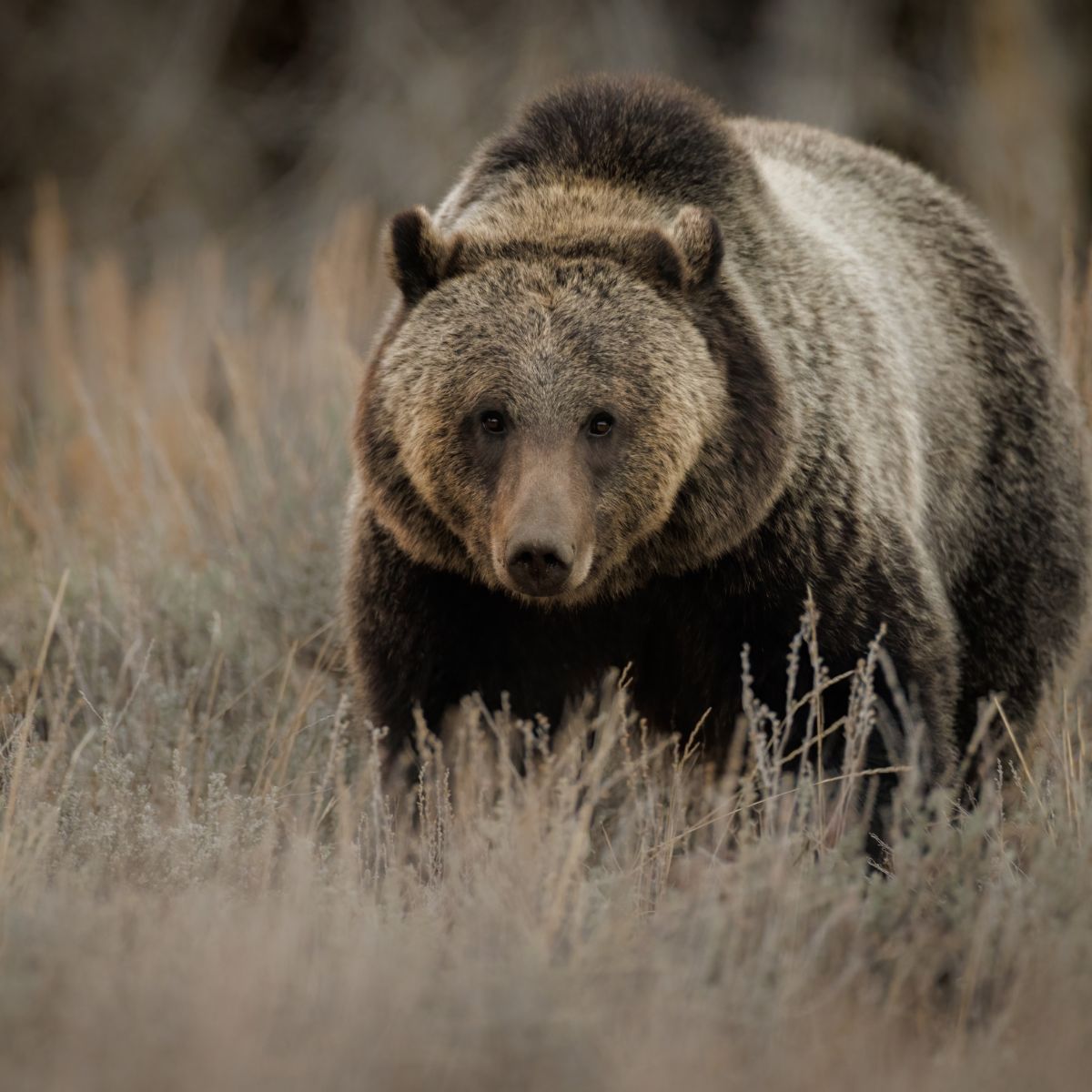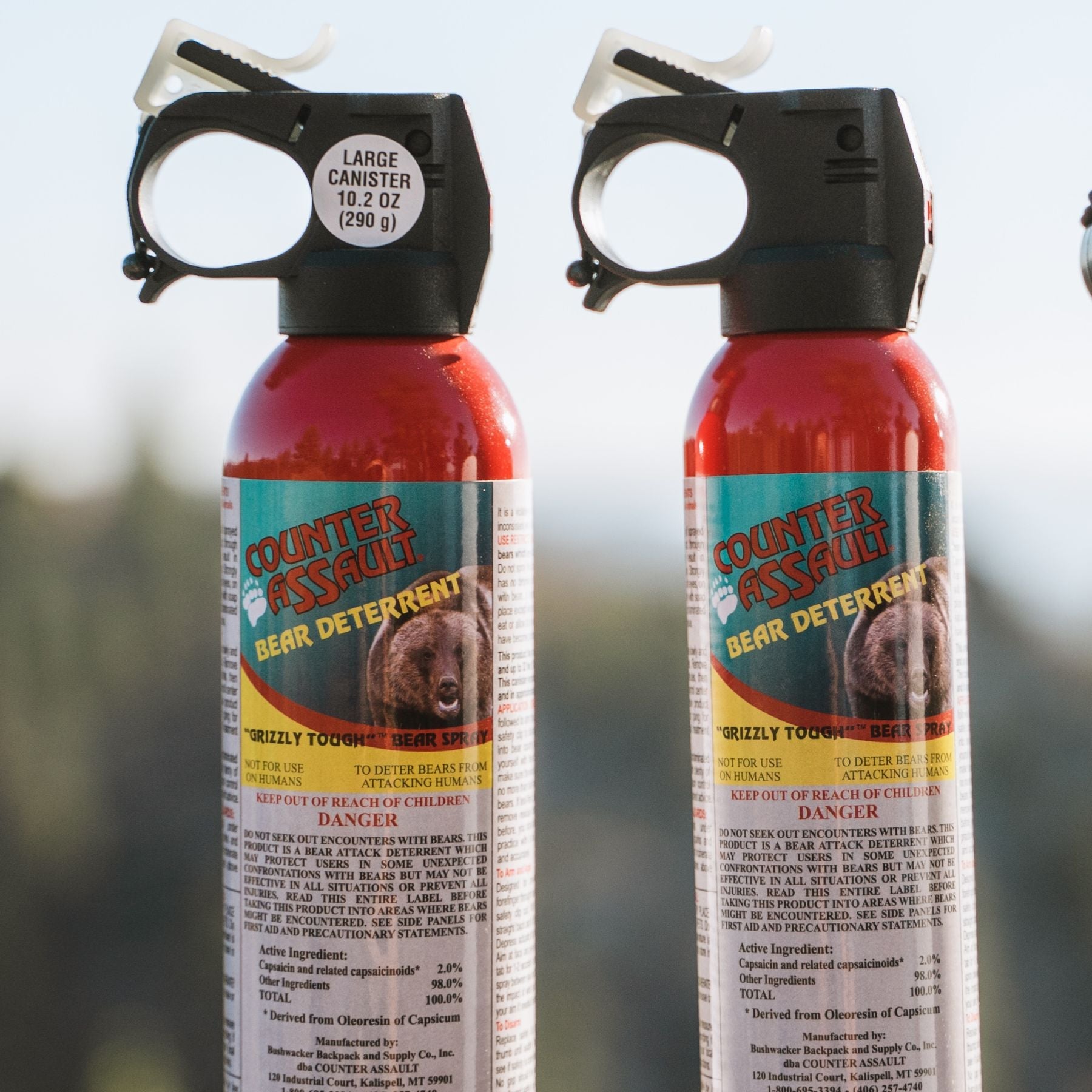Each year, there are more than three dozen reported bear attacks in North America. While each encounter differs in circumstance, many of them can be avoided or prevented with the implementation of standard bear safety precautions and having the proper equipment on hand in the off chance an encounter occurs. In this article, we will review tips and strategies for taking the appropriate measures to reduce the likelihood of a bear encounter while in bear country, while also setting out to teach proper techniques to keep your adventure safe in a situation where an encounter occurs.
Recognizing Bear Types
Being able to distinguish between various bear species is an essential skill that can improve safety in areas with bears.

American Black Bears
-
The most common bear species in North America
-
They are commonly black or a dark brown color. In some cases, their color can vary and even at times be perceived as grey.
-
Light-colored nose and mouth
-
Pointed ears and short curved claws
-
Omnivorous, sticking to a diet of primarily grass and fruits and occasionally feeding on proteins such as fish or small mammals
Brown Bears
-
Mostly found in mountainous areas of North America, but can also be found in areas with coastlines.
-
Much larger than the American Black Bear
-
Range in color across a number of shades of brown.
-
Shorter, rounded ears
-
Muscular stature in comparison to Black Bear counterparts.
Grizzly Bears
-
Recognized by their uniquely humped back and long claws.
-
Much smaller ears sitting atop their large heads.
-
Extremely territorial, resulting in the perception of them being one of the more aggressive bear species.
Are Bears Dangerous?
Whether you’re talking about black bears, brown bears, grizzly bears or any other species, all bears are dangerous when they feel threatened or become territorial. However, more generally speaking, bears tend to avoid human contact whenever possible. Aggressive bears usually display their fear or nervousness for their territory or cubs.
Here are a couple of tips for avoiding aggressive or “dangerous” bears:
-
Stay away from situations where bear encounters may occur.
-
Proper storage of food and waste can be crucial in preventing bear encounters.
-
Keep garbage or odorous waste a safe distance from campsites.
Bears may become scared and aggressive if you ignore these tips.
What to Do if You See a Bear
What do I do if I encounter a grizzly bear?
These techniques can help you stay safe during a grizzly bear encounter:
-
Talk calmly with a steady voice to identify yourself as human. This helps the bear recognize you're not prey and allows it to know your location without startling it.
-
Avoid direct eye contact with the bear, as this can be interpreted as a challenge or aggressive behavior. Instead, keep the bear in your peripheral vision while watching its movements.
-
Move away from the bear by slowly backing up at a diagonal angle. By doing this, you can maintain a safe distance while tracking the bear's location without turning your back completely.
-
Do not run, scream, yell or make any sudden movements. Running triggers the bear chase instinct. Sudden movements or loud noises may provoke an aggressive response.
-
Wave your arms and make yourself seem as large as possible. But keep your movements smooth and controlled. This posture helps establish your presence without appearing threatening.
Often in a bear encounter where a bear stands on its hind legs, people will see this as a defensive maneuver when this is not the case. This is in fact a sign of curiosity, and often is paired with a bluff charge. In this situation, it is best for you to stand your ground and talk to the bear in a monotone voice so it knows you are friendly and human. Take the step to get your bear spray out and arm it effectively in case you need to discharge it. If the bear backs away, be sure to continue to back away yourself to put distance between you and the bear.
What do I do if I encounter a black bear?
Similar to grizzly’s, staying calm is essential if you encounter a black bear. Running, making sudden movements or making eye contact can surprise a black bear and encourage it to become defensive.
Staying calm and speaking to the bear in a firm voice can be an effective way of making sure they know that you are human and therefore not their desired prey. In this situation, do not turn your back on the bear and back away slowly while also making yourself look as big as possible.
Stand tall, put your arms in the air, and ensure the bear has room to retreat while also arming your bear spray in case the need to discharge arises.
When encountering a bear in specific situations, our friends at The Be Bear Aware Campaign have some great advice. Visit their resources for more detailed information on handling various types of bear encounters!
Using Bear Spray
Using bear spray can be an effective way to deter a charging/approaching bear. When carrying bear spray, utilize a holster of your choosing, typically on your waist, chest, backpack or belt.
To arm, remove the safety clip, point in the direction of the charging bear, and squeeze the trigger. To disarm, put the safety clip back onto the trigger in the same fashion and push in until the clicks stop.
Counter Assault bear spray is an effective choice to utilize due to its 40ft spray distance and proprietary mixture that ensures it will be effective up to its expiration date.
Avoiding Bear Encounters
Whether you are camping in a national park, hiking trails near your home or hunting in the backcountry, bear spray should not be considered a substitute for taking precautionary steps to avoiding an encounter with a bear. Taking the appropriate bear safety steps in advance can ensure outdoor enthusiasts are reducing the opportunity of encountering bears of any species!

Pre-Trip:
Before you leave home, it’s important to ensure you have taken necessary steps to keep yourself as safe as possible. This includes:
-
Packing your food storage gear such as a Bear Keg
-
Research the area and understand what bears you may encounter and how to identify them
During Your Trip:
-
Eat and prepare food 100 yards away from camp
-
Store food and other odorous items in bear proof containers
-
Avoid hiking at dusk and dawn when bears are most active
-
Hike in groups and make noise
-
Be aware of your surroundings
How to React to Aggressive Bears

While taking precautionary measures can reduce the likelihood of a bear attack, there is always the chance you will surprise a bear and be faced with an aggressive animal. Fortunately, you’ve educated yourself and are prepared to take action!
-
Attempt to give the bear as much space as possible
-
Stay calm and do not make any sudden movements.
-
If faced with an aggressive bear beginning its charge, your first step is always to use your bear spray!
For Black Bears
After using your bear spray, if a black bear attack continues, it is important to fight back with everything you have including any objects you may find near you. Rocks, sticks or any other heavy objects you can get your hands on can be helpful in fighting back with a black bear.
While fighting back, it is important to make as much noise as possible. This can assist in gaining the attention of other people nearby while also attempting to scare the bear away. When fighting a black bear, you reduce the potential for injury by staying on your feet as long as possible rather than moving to the ground.
For Grizzly Bears and Brown Bears
Grizzly bears are generally more dangerous than black bears. When a grizzly or brown bear charges, stay calm, use your bear spray and make yourself appear as large as possible while making as much noise as possible. If deploying your bear spray does not deter the attacking bear, continue to make as much noise as possible or play dead. Lie face down, protect the back of your neck with your hands, and remain as still as possible. Stay in this position until the bear has left the area.
After an Encounter
If a bear encounter does occur with a bear of any species, it is extremely important to report the instance to the necessary authorities. Of course, if there are any injuries, first contact 911 once the bear retreats to get the appropriate medical assistance. When you are in a safe space, be sure to notify the appropriate entities like the National Park service or other similar authorities. This can ensure appropriate precautions are taken to avoid risk to other campers or other outdoor enthusiasts present in the same area.
In summary, exploring bear country offers a remarkable chance to experience first-hand the majestic wilderness and wildlife of our national parks. While bear encounters are possible, taking the proper precautionary steps can have a significantly positive impact on your overall experience and safety.
Some key contributors to safety:
-
Take time to research your destination's terrain and current bear activity before your journey.
-
Always carry proper food storage equipment like bear canisters or bags.
-
Maintain a clean campsite by keeping food and waste at least 100 yards from where you sleep.
-
Never enter bear country without an accessible can of bear spray, and practice removing it from its holster before your trip.
-
Know how to identify the bear species in your area and understand their specific behaviors.
If you encounter a bear, stay calm and speak in a steady voice while slowly backing away. After any encounter, report the incident to local rangers or wildlife authorities.
Safe travels in bear country!















